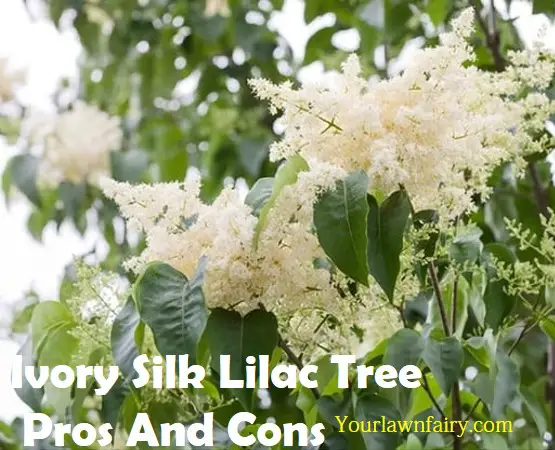The ‘Ivory Silk’ Japanese Tree Lilac is a beautiful and unique lilac that can add an elegant touch to your garden.
This species of lilac is quite different from other lilacs because of its large size and creamy white flowers.
The tree can reach a height of about 20 to 30 feet with a 15-foot-spread. It grows best in USDA hardiness zones 3 through 6, but can also be grown in other areas if given winter protection.
The tree has an oval or pyramidal form when young, but as it grows older it spreads to a rounded shape.
Its leaves are dark green and glossy on top; the underside is pale green with some silvering near the veins.
The flowers are borne on long stems and look like very small pea blossoms—creamy white with no spots or stripes on them at all!
They’re borne spring to early summer, which means you’ll get plenty of blooms before they’re done flowering so you’ll have plenty of time to enjoy their beauty before they start dropping petals off onto your patio or driveway.
This tree is perfect for those who like to add a little elegance to their gardens. It grows in full sun and needs only moderately-drained soil, so you can plant it just about anywhere. It is also drought-tolerant and can handle some salt spray, which makes it a great choice for areas where there’s a lot of salty air blowing in from the ocean or nearby lakes.
The ‘Ivory Silk Lilac’ ‘Japanese tree lilac’ (Syringa reticulata) is a compact and beautiful shrub that is highly adaptable to many different growing conditions. It can grow in full sun and has excellent drought tolerance, which makes it an excellent choice for the garden or patio.
The Ivory Silk lilac is a member of the Oleaceae family, which includes plants like privet, and olive. The trees are native to Japan, China and Korea.
They grow well in clay soil but also tolerate sand and loam soils. They will do best in neutral to alkaline soil but can tolerate slightly acidic soils as well.
The trees need moisture but not standing water in the soil so they prefer well-drained soils with good drainage. They also need full sun exposure for best growth and flowering performance during the summer months when temperatures are high enough to support blooming activity.
Let’s dive deep into the pros and cons of this beautiful lilac tree.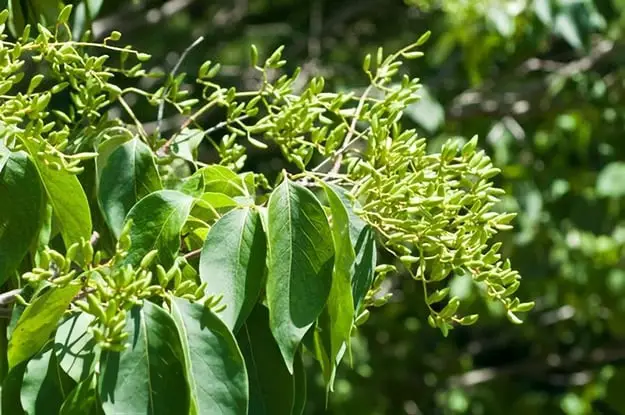
Ivory Silk Lilac Tree Pros
Beautiful white blooms
One of the most popular lilac trees, the Ivory Silk Lilac Tree is known for its beautiful white blossoms that appear in spring.
The flowers on this tree are so beautiful, they’re sure to make your neighbors jealous! The blooms are soft and elegant, with a gentle scent that will fill the air around you as they grow. They look like they belong in a fairy tale!
This tree is perfect for anyone who wants to add something special to their yard or patio. It’s also great for people with allergies because it doesn’t produce pollen or other allergens that can trigger reactions in those who are sensitive to them.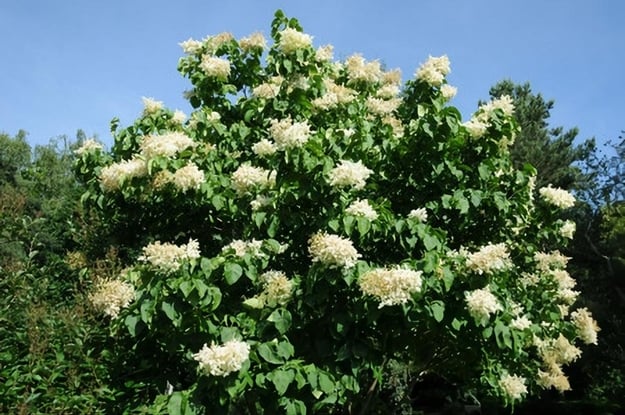
Moderate to fast growth rate
The Ivory Silk Lilac Tree is a popular choice for homeowners who want to add a splash of color to their yard without sacrificing space. With its moderate to fast growth rate, it will quickly become one of your go-to plants for adding interest and texture to your landscape.
Low Maintenance
The Ivory Silk Lilac Tree is a beautiful, low-maintenance tree that requires little pruning and can grow in full sun or partial shade. It’s also drought-tolerant and can handle cold temperatures.
There are many reasons why this tree makes a great addition to your yard or garden. First, it’s easy to grow. The tree grows well in zones 3 through 6, so you can plant it anywhere in the country except for the very warmest parts of Florida and Texas.
Second, its branches are long and slender, creating an elegant appearance that is perfect for formal gardens or smaller yards.
Third, it produces fragrant blooms throughout the summer months that attract bees, butterflies, and hummingbirds all of which will make your yard even more beautiful!
Finally, one of the best things about this tree is how well it does in poor soil conditions without requiring much maintenance from you at all!
All you’ll need to do is prune its branches occasionally if they get too long which shouldn’t take much effort, water it when needed (although it doesn’t need too much watering because of its drought-tolerance), fertilize once per year before blooming season starts and that’s it!
Disease-resistant
The Ivory Silk Lilac Tree is one of the most disease-resistant trees you can find. It’s easy to grow and maintain, so even if you have no experience with gardening, you’ll be able to keep this tree thriving.
Ivory Silk Lilac Tree Cons
Flowering Period
The Ivory Silk Lilac Tree reaches maturity in about three years, and it will flower in the spring and summer months of your local climate.
No fall color
If you’re looking for a tree that has beautiful fall color, the Ivory Silk Lilac Tree is not for you.
Instead of changing colors like other trees do in the fall, the leaves on this one stay green all year long. If your goal is to have a beautiful display of fall foliage on your lawn or garden, then this isn’t the tree for you.
While this may not be a deal breaker for some people, others may prefer to plant trees that will provide them with seasonal beauty. If you want a tree with gorgeous fall color, we recommend planting a Japanese Maple instead.
Susceptible to pests
If you have an Ivory Silk Lilac Tree, you know that this tree is very much pest resistant. But even so, it is still vulnerable to pests if not taken proper care.
Lilac borer: The lilac borer is a serious pest that attacks and kills many types of trees and shrubs, including the Lilac Silk Tree.
This insect eats its way into the trunk of your tree, causing it to die. The best way to prevent this from happening is by spraying them with certain chemicals or using other pesticides like neem oil, which can be found in most garden stores today that sell organic products. If you don’t do this, then your tree will most likely become infested with these pests.
Lilac leaf miner: The larva of this insect causes yellowing or browning of leaves on the upper part of the plant. Remove affected leaves by hand picking or pruning out infested branches as soon as you see them. Make sure that you get all of the larvae because they can re-infest new growth.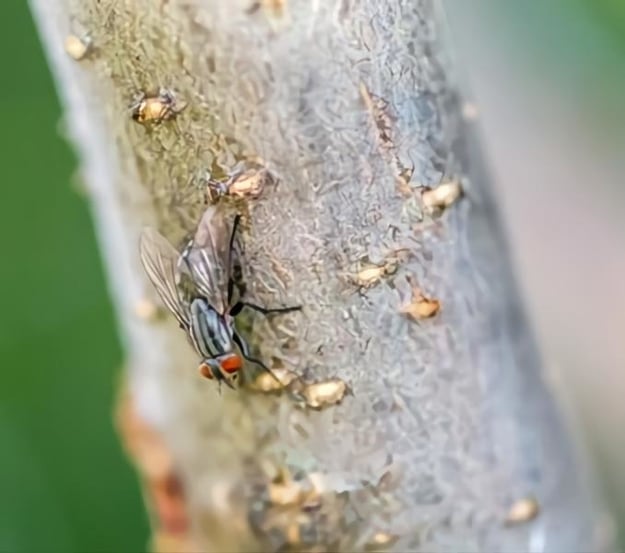
Scales: Insects such as scale insects feed on your plant’s sap, causing distortion and dieback of twigs and branches, stunted growth and discoloration of leaves. Scales are usually found on stems or under leaves where they are protected from pesticides and sprays and difficult to control with other methods
Susceptible to diseases
The Ivory Silk Lilac Tree is a beautiful choice for anyone who wants to grow one of the most fragrant lilac trees. The tree is well-known for its resistance to common diseases and pests, but it is not without its flaws.
Despite being resistant to many common diseases, the Ivory Silk Lilac Tree is still vulnerable to certain diseases if not taken proper care. Bacterial blight and Phytophthora blight are two of the most common problems that affect this species of lilac tree. Powdery mildew, Verticillium wilt, bacterial crown gall are other common diseases that can attack your tree if you don’t take proper care.
These diseases may be identified by their typical symptoms: spots on leaves and branches; wilting leaves or branches; stunted growth; blackened stems; discolored flowers; darkening leaf veins; yellowing leaves with brown spots; dead branches; bark cracking or peeling off from the trunk or main branch at ground level; tiny cracks around leaf scars on older trees (older than 15 years).
To prevent these problems from happening you need to keep an eye out for signs of disease in your plant such as discoloration of leaves or bark peeling off.
Fragile roots
The roots of this plant grow very close to the surface, which means that they can easily be damaged by digging or hurting them with heavy objects. You should avoid planting them near walkways or anywhere else where people might accidentally damage their roots.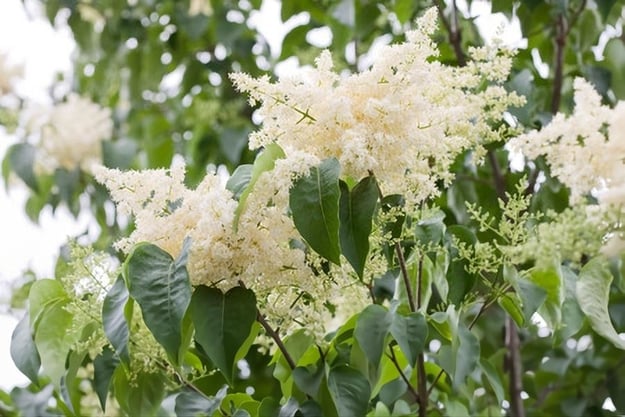
Conclusion
Ivory Silk Lilac tree is a beautiful addition to your garden, with its long creamy white flowers and delicate fruit. Its compact size is ideal for the small gardens of my property. This lovely tree is easy to care for, and low maintenance. It does have a few cons to consider, but overall it’s a great choice for people looking for a flowering tree.
Also Read: Raywood Ash Tree Pros And Cons
